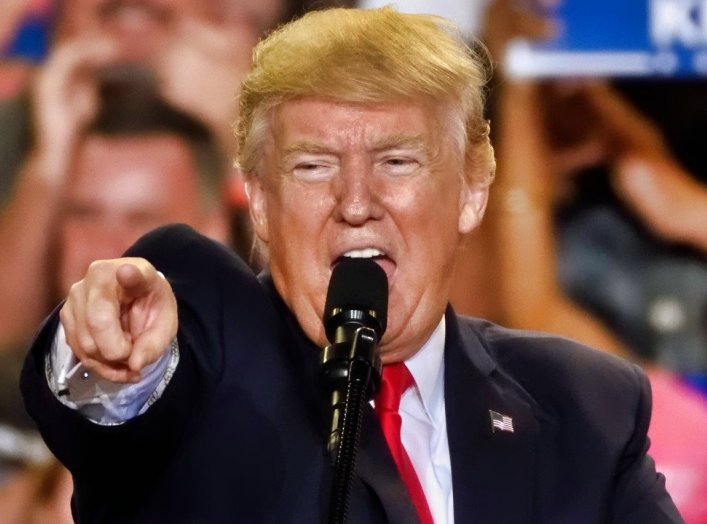Immigration: The Issue That Makes Joe Biden or Donald Trump President?

Immigration will not be an easy fix, as it has foiled successive administrations, both Republican and Democrat alike. Neither a hardline nor permissive domestic policy is likely to cause the problem either, as domestic policy only deals with the downstream effects of our foreign policy. To get at the heart of the immigration crisis, the US will need to reconsider its foreign policy.

Immigration has been one of the most pressing issues in US politics for several years. Seemingly intractable, successive administrations have failed to refine what seems like a broken immigration system.
Immigration is often framed as a moral issue, especially in the wake of the Trump years. Trump has been stirring up political controversy, unrelentingly, for years now. But it was immigration where Trump first made his mark, taking a hardline tact on immigration during his 2016 campaign, Trump spoke of “bad hombres” and promised to build The Wall as he tapped into the fear and anger of marginalized Americans who were hesitant to commit national resources to outsiders.
But immigration is not simply a moral issue, it’s not as simple as ‘No Human is Illegal.’ Overwhelmingly, despite the political framing, immigration is a practical issue. Accommodating hundreds of thousands of people requires a realignment of finite resources and the tightly tailored coordination of a sprawling infrastructure.
Similarly, immigration is not just a domestic issue. When discussing immigration, the discussion centers around domestic issues like deportation policy, detainment policy, whether or not to build The Wall. We should be discussing these domestic issues, of course. But domestic policy only addresses the tail end of the immigrant’s arc, that being the point after which the immigrant has arrived at, or passed through, our border.
Yet before arriving here, immigrants first make the decision to leave their country of origin, and then, the immigrant decides on a destination, which so often, becomes the USA. If we want to influence the upstream decisions that have contributed to our immigration crisis, we need to address not domestic policy but foreign policy – specifically the decisions have led to instability in regions like, especially, Central America.
“In the 1980s, Washington and its neoliberal collaborators began imposing policies that favored multinational corporations and hurt the working poor,” Jeff Faux wrote for The Nation. “For at least 150 years, the United States has intervened with arms, political pressure, and foreign aid in order to protect the business and military elites of these countries who have prospered by impoverishing their people.”
Specifically, the US “and its neoliberal collaborators at the IMF and World Bank began imposing policies on the region that favored large multinational corporations, undercutting the small farms and business that had supported the working poor,” according to Faux. “Meanwhile, many of the oligarchs became partners in the growing narco-trafficking business. Protected by government officials, criminal hangs have spread throughout the region, adding threats of kidnapping, extortion, rape, and murder to the daily life of people struggling to make a living.”
The result is an inhospitable, unstable environment in which the common person has no meaningful future. Naturally, people leave – only to arrive at an inhospitable environment at the US border. As Faux describes, “we have trapped Latin American migrants between a foreign policy that drives them from home and a domestic policy that drives them back.” A vortex of transient misery.
Immigration will not be an easy fix, as it has foiled successive administrations, both Republican and Democrat alike. Neither a hardline nor permissive domestic policy is likely to cause the problem either, as domestic policy only deals with the downstream effects of our foreign policy. To get at the heart of the immigration crisis, the US will need to reconsider its foreign policy.
Problem for Donald Trump and Joe Biden: The American Dream Is Dead
Indeed, the American dream, as once understood, no longer seems to exist – which is an especially bitter pill for the millennials and Gen Z Americans who grew up watching their parent’s generation make a living for themselves proportionate to their work ethic and talent level.
Is the American dream dead?
That the question needs to be asked indicates a problem.
And Americans are most certainly asking the question. Since about 2008 or so.
Is the American dream dead? Increasingly, in consulting their most immediate biographies, in sifting through the wreckage of two economic collapses, a lock-down, two forever wars, soaring inflation, et cetera, et cetera…Americans are answering yes, the American dream is dead.
What is the American dream?
Although vaguely defined, the general notion of the American dream is widely accepted domestically and abroad. For generations, the vaguely defined, generally accepted notion of the American dream was powerful enough to prompt wave after wave of migrants to leave their homeland and make the trek to America – with the understanding that if they were willing to work, they would punch their ticket to the middle class.
The American dream wasn’t just for migrants. US-born citizens grew up with the same understanding – if they were willing to work, they would earn financial security as members of the middle class.
But entering the middle-class was just the American dream’s floor. The ceiling? The ceiling didn’t exist. The upper class and beyond was accessible. And the access was merit based. Go to college, go to law school, go to medical school. Start a company. Sell more than your competitors. If you were the best, you would be rewarded accordingly.
But today, the American dream’s floor – a middle-class guarantee – and the American dream’s endless ceiling – a merit-based ascent without limits – both seem like bygones. Distorted nostalgia. Something so distant that maybe it never existed at all.
The carcass of the American dream
I’ll spare you the hard numbers. You know what the numbers look like. A hollowed out middle class. Stagnant wages despite increased productivity. Skyrocketing tuition prices despite a decreased return on the back end. Staggering student debt. Affordable housing shortages. It’s not pretty out there. The gulf between rich and poor is widening – so much so that the economy has arguably become an oligarchy, with a handful of tech billionaires controlling more wealth than the nation’s masses.
And the nation’s masses? Putting in the time, working Monday-Friday – or more – doesn’t guarantee access to the middle-class anymore. Willing and able workers are struggling to earn livable wages. To buy houses. To pay their medical bills. To save for retirement. To send their kids to college. The nation’s masses live on credit card debt and self-medication and broken promises – in the shadow of the American dream, in a climate that breeds radicalism.
The American dream has abandoned not just the masses, but the superlative, too. Not wholesale. But in large part. Attending college doesn’t mean you’re going to land a meaningful, or even sustenance-sustaining, job. Attending law school doesn’t mean you’re going to be able to buy a home, or even live in a decent neighborhood. Increasingly, the perception is that upward ascension is not merit-based at all, that rather, opportunity is reserved only for the already affluent. Which is essentially the inverse of the American dream.
Indeed, the American dream, as once understood, no longer seems to exist – which is an especially bitter pill for the millennials and Gen Z Americans who grew up watching their parent’s generation make a living for themselves proportionate to their work ethic and talent level.
- Questions and Answers
- Opinion
- Motivational and Inspiring Story
- Technology
- Live and Let live
- Focus
- Geopolitics
- Military-Arms/Equipment
- Ασφάλεια
- Economy
- Beasts of Nations
- Machine Tools-The “Mother Industry”
- Art
- Causes
- Crafts
- Dance
- Drinks
- Film/Movie
- Fitness
- Food
- Παιχνίδια
- Gardening
- Health
- Κεντρική Σελίδα
- Literature
- Music
- Networking
- άλλο
- Party
- Religion
- Shopping
- Sports
- Theater
- Health and Wellness
- News
- Culture

